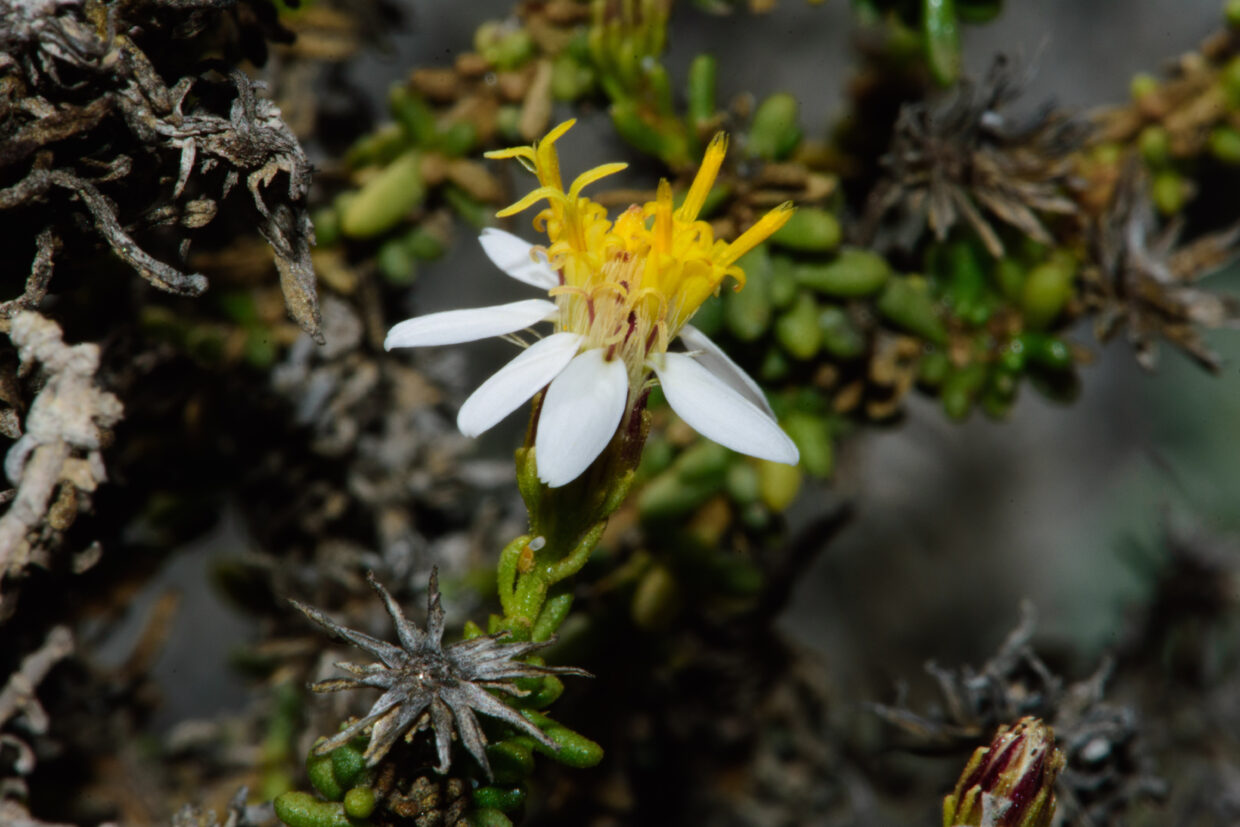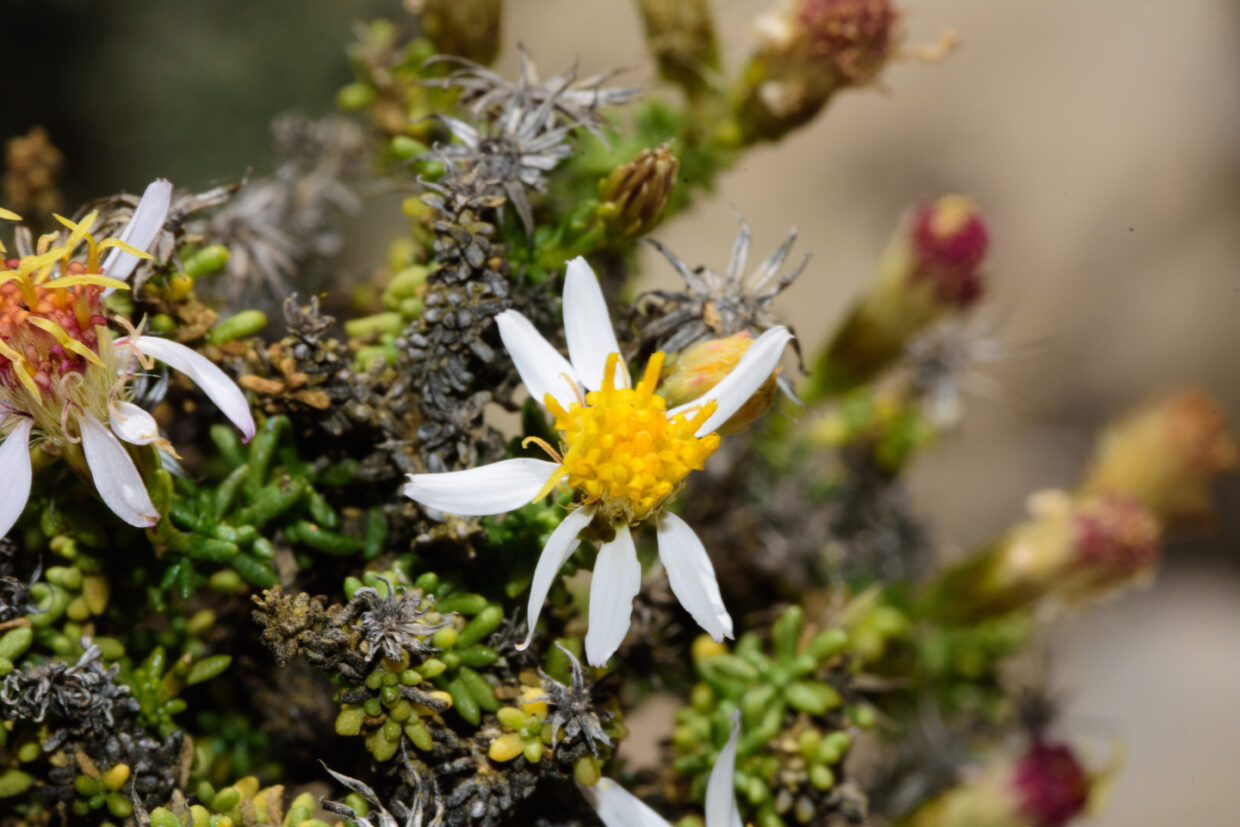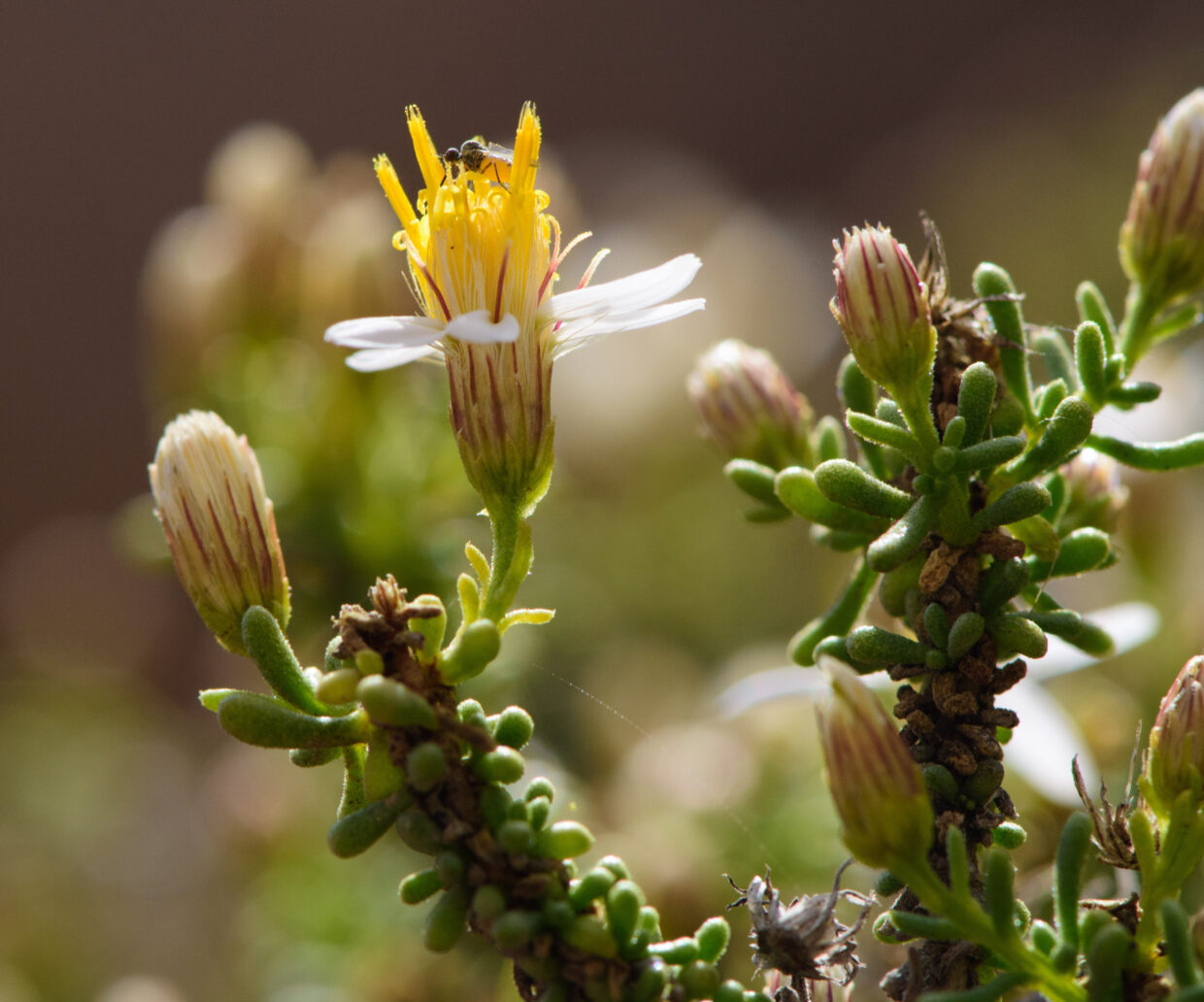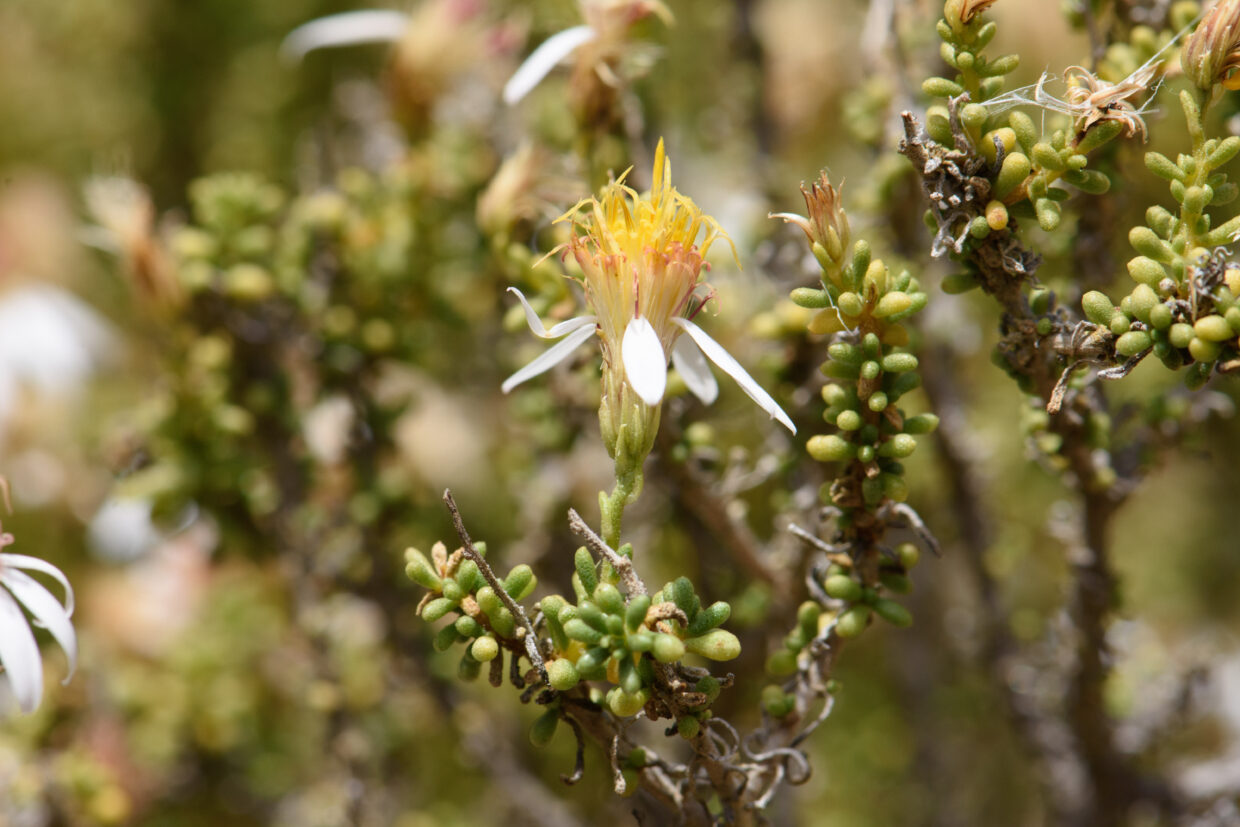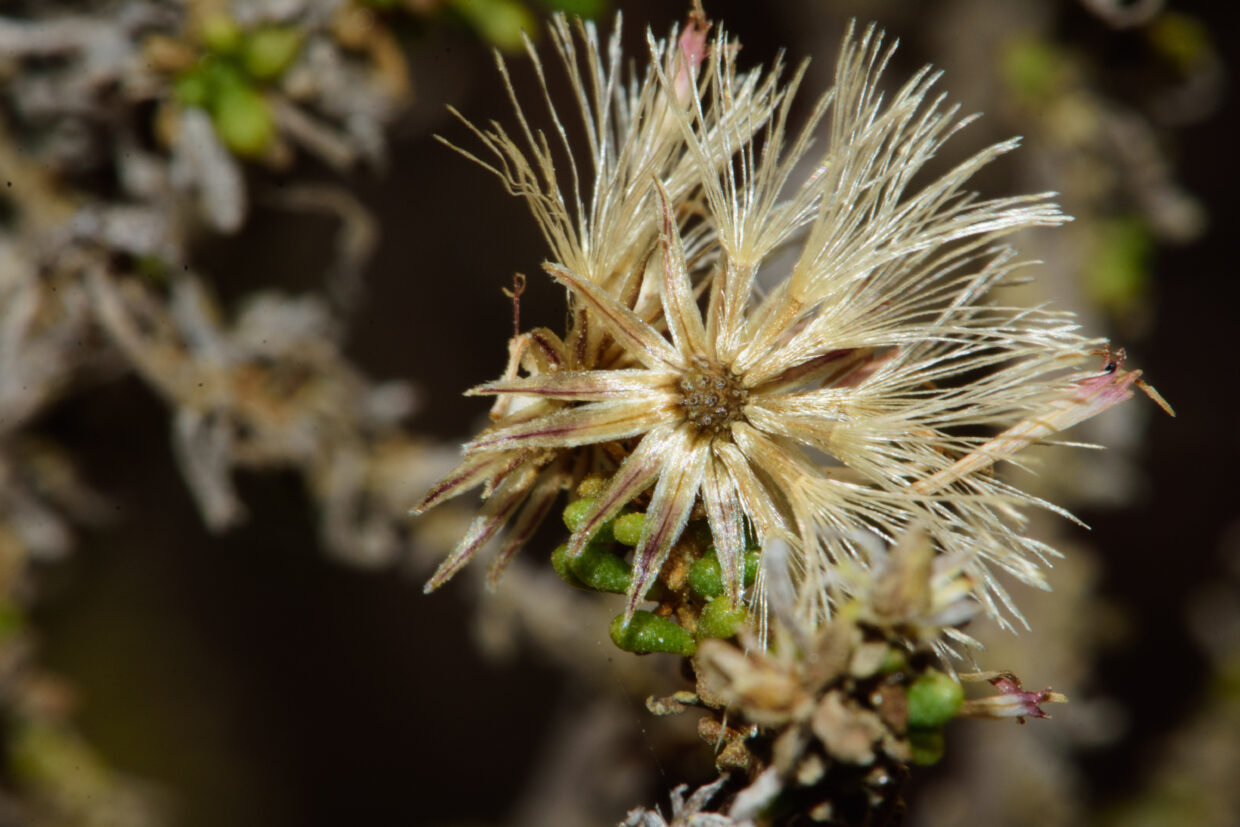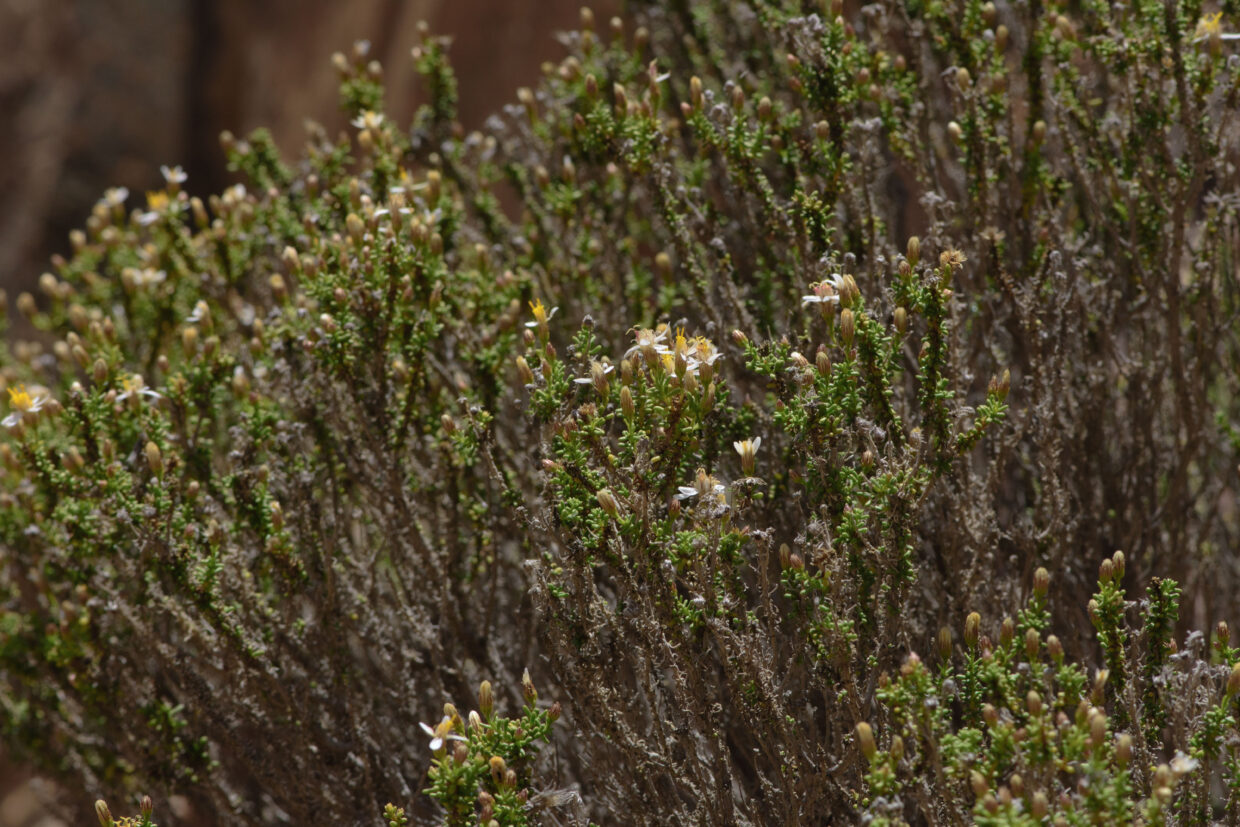Type citation
Chile. Región de Antofagasta: Norte de Paposo, Quebrada Botija, 24°30.334'S, 70°32.834'W, alt. 170 m, 14 Oct 2021. A. Moreira-Muñoz 3355 (holotype: SGO). Norte de Paposo, Quebrada Botija, 24°30.334'S, 70°32.834'W, alt. 170 m, 15 Dec 2020. A. Moreira-Muñoz 3204 (paratype: SGO).
References
-
Ibáñez et al. (2022)
Ibáñez, S T , Muñoz-Schick, M , Scherson, R A and Moreira-Muñoz, A 2022. A new species of Diplostephium (Asteraceae, Astereae) from the Atacama Desert, Chile. PhytoKeys 215: 51-63.
Regions
Habitat
Desert and Desert fog oases (Lomas)
Distribution and habitat
Only known from Quebrada Botija growing between 170 to 700 m. It can be found growing with Copiapoa boliviana, Cristaria integerrima, Eremocharis fruticosa, Jarava tortuosa., Proustia pungens subsp. tipia and Spergularia arbuscula.
Conservation status
- CR B1ab(iii),C2a(ii),D (Ibáñez et al. (2022))
Habit
Shrub to 70 cm tall. Flowering between November and January. Fruits are dispersed between December and February (Ibáñez, 2022).
Key characteristics
This is a distinctive from most species of Diplostephium due to the lack of densely matted, woolly hairs on its leaves and stems. Additionally, it has glandular succulent leaves, and short branches with leaves that are without hairs, although the uppermost part of the longer shoots can be covered with fine hairs (Ibáñez, 2022).
Notes
This species is unusual in that it is the only species of Diplostephium to occur at low altitude (170 and 700 m). All other species are known from a much higher altitudinal range of between 2500 and 4500 m (Ibáñez, 2022).




